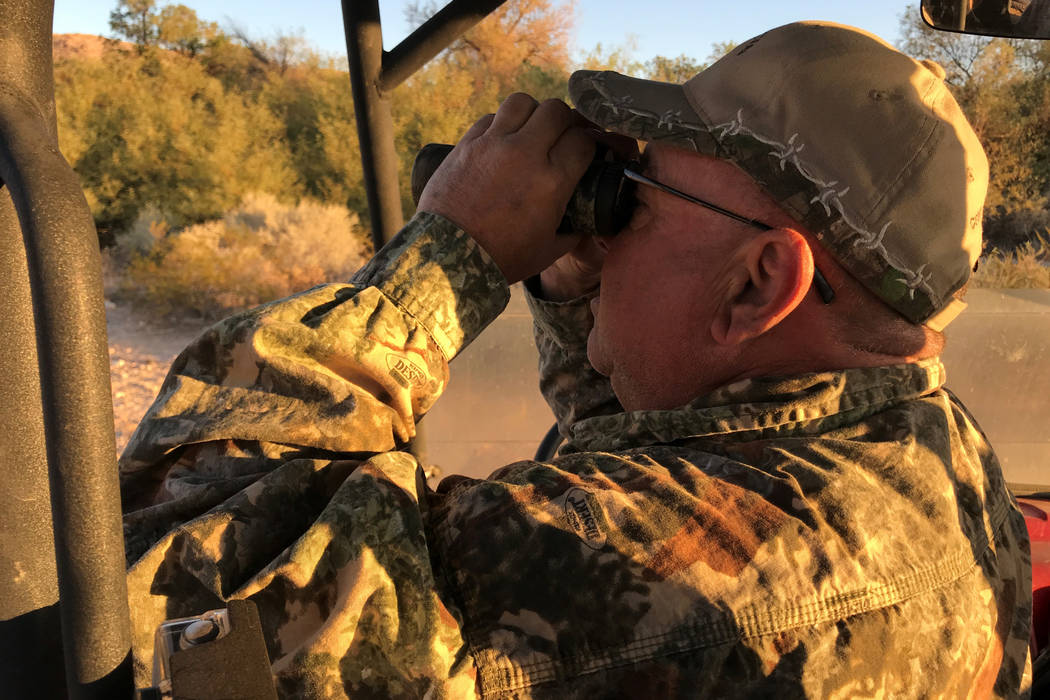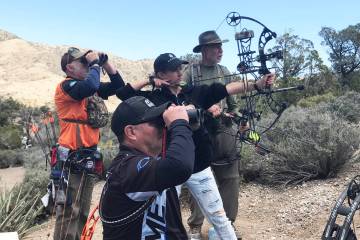Hunters can be helpful in the field even without a big-game tag
It’s October, and temperatures are dropping in northern climes, leaves in the high country are donning their autumn colors and hunters with big-game tags in their pockets are heading afield.
While some will make that trek on their own, most will have the company of family members and friends who stand ready to serve as a second set of eyes, a two-legged pointer or even a pack mule if needed. Those friends and family members might have tags, too, but often they don’t.
Some people might ask why those without tags would load up their camping gear, lace up their boots and head for wild country with someone who does. After all, what’s in it for them?
The answer to that question is not as simple as someone who doesn’t hunt might believe. In fact, it’s something unique to each individual participant and in some ways hard to explain, but it probably can be boiled down to having a desire to share in the hunting experience. Even if it’s in a support role.
One of my favorite hunting experiences was a 10-day deer hunt with three friends in central Nevada. I didn’t have a tag, so my job was to help the others fill theirs. Along the way, we endured snowfall, rain and cold mornings, but we also explored new country and learned things we didn’t know about deer.
Early one morning, Paul Mona and I worked our way across a gentle slope with a sweeping view of the valley below. There wasn’t much cover to hide behind, so we made use of every low-growing bush or rock we could find. Two days earlier, we had seen a group of four small bucks in this area and were hoping to find something a little bigger.
We were glassing the slope ahead of us when a nice three-point buck climbed out of a draw about 200 yards north of our position. We were caught out in the open and couldn’t move without giving ourselves away. The only thing we could do was remain as still as possible and hope the wind didn’t give us away.
Though the buck stopped a few times to look in our direction, he just kept moving steadily forward and didn’t seem to notice us. He kept on coming until he was less than 100 yards from our “hiding” spot. Then a single shot from Paul’s .308 secured the buck and the work began.
But the hunting experience is about more than filling a big-game tag. It’s about waking up long before the sun, hiking in the dark and shivering on the side of a hill while waiting desperately for the sun to rise. It’s about watching the natural world come alive, hearing a bird fly low overhead, watching a coyote slink through the brush and seeing new country for the first time. It’s about becoming part of the natural world, if only for a moment.
A day or two after Paul filled his tag, we found a herd of elk while returning to camp after making an ice cream run to town. The bulls were still bugling, so we took the opportunity to test our elk calling skills. We may not have won any calling contests, but we did manage to make the biggest bull nervous enough to push his harem back into the trees.
And then there are the teaching moments that come while supporting a new hunter, especially when that hunter is one of your kids. Those moments are found in all aspects of the hunt, from camp chores to glassing open country or negotiating difficult terrain.
Mentors also can teach young hunters about the importance of habitat and how its condition impacts all animal populations or discuss their role in the conservation process. Few things are as gratifying as being there when a new hunter suddenly comes to an understanding of the circle of life as it really is rather than as it is generally portrayed by cartoon characters on a movie screen.
Hunters have a different relationship with the wild than other outdoor enthusiasts. Not necessarily better but different, and the only way to understand it is to experience it, whether you have a big-game tag in your pocket or are there to support someone who does.
Note — The youth waterfowl hunt at the Overton Wildlife Management Area is Oct. 19. Young hunters and their mentors can join the Nevada Department of Wildlife for doughnuts at 4 a.m. There will be prize drawings and a posthunt breakfast. Reservations are required. Call 702-486-5127 for information.
Freelance writer Doug Nielsen is a conservation educator for the Nevada Department of Wildlife. His “In the Outdoors” column, published Thursday in the Las Vegas Review-Journal, is not affiliated with or endorsed by the department. Any opinions are his own. Find him on Facebook at @dougwritesoutdoors. He can be reached at intheoutdoorslv@gmail.com.

















